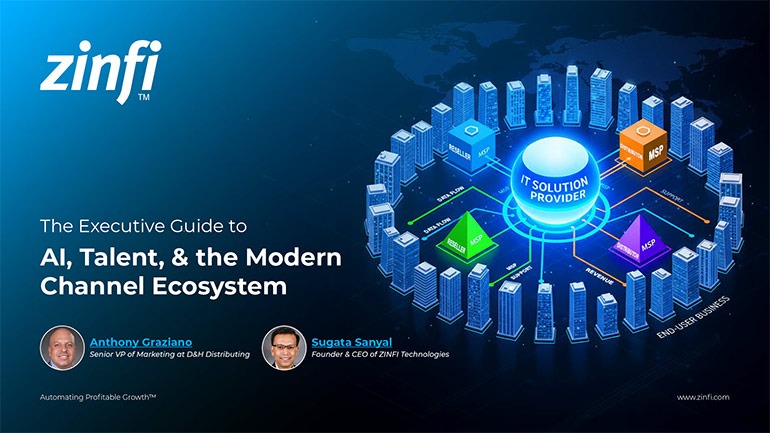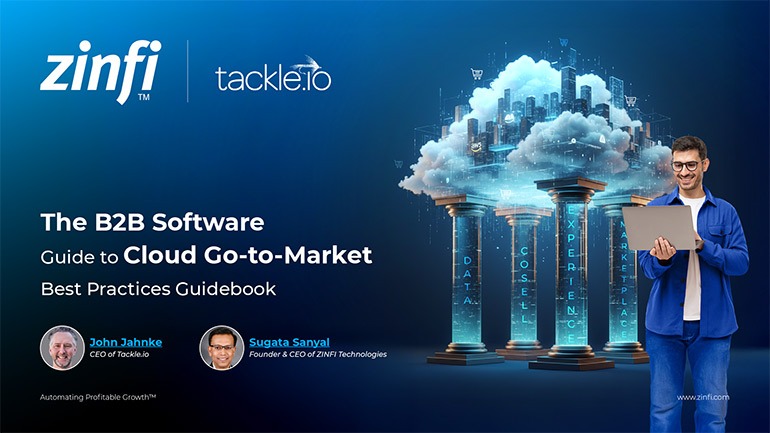Best Practices Articles

What is Similar or Different About Using PRM Versus CRM for Partner Management?
The acronym PRM stands for partner relationship management; CRM stands for customer relationship management. PRM and CRM are quite similar in nature, both architecturally and in terms of their functionality. However, there are some fundamental differences between the two types of platforms. Let’s begin by discussing some of the similarities between PRM and CRM, and then we will discuss the differences between the two.
Core Similarities between PRM and CRM
Here is a high-level summary of how PRM tends to behave like a CRM, mostly from an architectural and workflow perspective:
- Architecture – Both PRM or CRM use software that is built on the latest web services technology. Both employ a three-tier architecture (database layer, application layer and web presentation layer). They also tend to run on software as a service (SaaS) infrastructure.
- Application framework – Both PRM and CRM have a core platform which houses records—records of partners in the case of PRM, and records of end users in the case of CRM. However, additional applications can be plugged into this framework to do more. A common example is quote-processing software that you can plug into a basic CRM application, allowing the sales rep to send quotes directly from the CRM to the client. Similarly, with PRM you can plug in a learning management system (LMS) or partner incentives management(PIM) software to keep track of partner training or incentives programs.
- Records structure – The records structure for both PRM and CRM are pretty much identical at a core level, including fields for things like contact name, title, company name and address. Like a state-of-the-art CRM platform, a best-in-class PRM platform also allows records customization and the addition of various customizable fields. This is essential to allow adaptation of a basic record structure into a specific organization. Since each organization is different, chances are most of the fields that are used and tracked are also going to be different.
- Workflow – Both CRM and PRM provide a logical workflow where you can automate various internal activities, such as lead management, pipeline review, authorization of pricing, quotes, training, incentives, etc. As I noted earlier, fundamentally a PRM works just like a CRM in many aspects, especially when it comes to workflow. If you are considering investing in a PRM platform, make sure it flows like your CRM.
- Business intelligence – One of the most important areas of similarity between CRM and PRM is analytics. Any state-of-the-art PRM or CRM platform should allow users to run customized reports and analytics. Both types of platforms are designed to automate an organization’s workflow, but running analytics allows them to optimize their automated processes by identifying what is working and what is not.
When you are picking a PRM platform you need to make sure the fundamentals are sound and will work seamlessly with your CRM platform.
Core Differences between PRM and CRM
With the similarities in mind, let’s now focus on what’s different between CRM and PRM platforms.
- Purpose-built – A CRM system is, by definition, designed for customer relationship management, so in most cases the way accounts are set up is designed for a direct sales team to prospect, sell and grow existing end-customer accounts directly. On the other hand, PRMs are built for partner relationship management and the structure, workflow, applications, etc. are all designed for partner network management or channel management. Architecturally the two systems have a number of similarities, but functionally they are two very different applications.
- Pricing – Most CRM solutions are sold with per-user, seat-based licensing. This doesn’t work nearly as well in the partner management universe, simply because it is very hard, if not impossible, to predict utilization rates. If an organization pays too much to provide user licenses to all of their partners, they may end up wasting a lot money unnecessarily; on the other hand, if the organization doesn’t buy enough licenses and too many partners start using the product, they may get a rude awakening when the bills start coming in later on. This is why it is essential to procure PRM licenses for unlimited use, so that an organization is not taking unnecessary risks either way. If you are considering investing in a PRM system, look for providers like ZINFI who provide a very affordable unlimited usage model.
- Global support – While most large CRM providers provide global support, they generally support only the product and provide very little deployment or domain-specific knowledge. This is where leading PRM providers, like ZINFI, can provide tailor-made global support via a channel marketing concierge solution that can ensure deployment, adoption and utilization of PRM solutions is significantly higher than what you would normally get with CRM.
- Integrated solutions – CRM is one of the most horizontal products that exists, and that’s why the market has grown nearly to the $30 billion level. Once a CRM is deployed, though, major workflow customization is required, and if an organization wants to add additional functionalities, they will either have to build them by using professional services resources (usually expensive) or procure additional applications from the marketplace. This adds quite a bit of complexity and cost to the overall CRM deployment, and as a result most CRMs are not utilized to their fullest extent. PRMs, on the other hand, are purpose-built and come with all of the necessary applications needed for partner relationship management. As a result, PRMs tend to be very easy to use, and rates of deployment and partner adoption happen faster.
- Total cost of ownership – When you combine the differences in numbers one through four above, it is clear that PRM has a significantly lower total cost of ownership (TCO) than CRM, because of its lower licensing costs, integrated purpose-built application suite (with no additional cost surprise down the road) and global support to drive adoption of PRM across the larger partner user base.
I hope that I have been able to clearly show you that while PRMs are similar to CRMs technically, the value proposition they offer represents a very different, more viable alternative to deploying CRM platforms for partner management. Channel management is complex, and organizations trying to conduct business at the speed of digital need an end-to-end integrated platform that is purpose-built, affordable and globally supported to truly make it easy for partners to do business with them. A PRM system can also reduce cost and complexity on the organization side to provide a tangible return on channel management investment.
If you want to learn more, please go to zinfi.com.
Best Practices Guidebook
 Modernizing Channel Marketing: AI and Ecosystem Enablement Best Practices
Modernizing Channel Marketing: AI and Ecosystem Enablement Best PracticesDownload for FREE
 The Channel’s Shift to Partner-Led With AI Best Practices
The Channel’s Shift to Partner-Led With AI Best PracticesDownload for FREE
 Hyperscalers, ISVs, and AI: Shaping the Future of B2B Software Distribution
Hyperscalers, ISVs, and AI: Shaping the Future of B2B Software DistributionDownload for FREE
 Definitive Guide to a Partner Ecosystem-First Sales Strategy
Definitive Guide to a Partner Ecosystem-First Sales StrategyDownload for FREE
 The Partner-Led Digital and AI Transformation Best Practices
The Partner-Led Digital and AI Transformation Best PracticesDownload for FREE
 Startup Talent Recruitment: Hiring Missionaries, Not Mercenaries
Startup Talent Recruitment: Hiring Missionaries, Not MercenariesDownload for FREE
 The Future of Partner Relationship Management with AI in Partnerships
The Future of Partner Relationship Management with AI in PartnershipsDownload for FREE
 Cybersecurity for the 99%: Strategies from the Frontline
Cybersecurity for the 99%: Strategies from the FrontlineDownload for FREE
 Mastering Partner Relationships: A Strategic Approach to Business Growth
Mastering Partner Relationships: A Strategic Approach to Business GrowthDownload for FREE
 Mastering Partner Relationship Management: Keys to SaaS Channel Success
Mastering Partner Relationship Management: Keys to SaaS Channel SuccessDownload for FREE
 Navigating the AI Revolution: Guide for Partners in the Microsoft Ecosystem
Navigating the AI Revolution: Guide for Partners in the Microsoft EcosystemDownload for FREE
 Mastering the Modern Buyers Journey: Sales Leader’s Guide to AI & Engagement
Mastering the Modern Buyers Journey: Sales Leader’s Guide to AI & EngagementDownload for FREE










